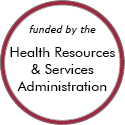Rural Project Examples: Children and youth
Other Project Examples
North Carolina Innovative Approaches Initiative
Updated/reviewed July 2024
- Need: Children and youth with special healthcare needs (CYSHCN) face many barriers to coordinated, comprehensive healthcare.
- Intervention: The North Carolina Innovative Approaches (IA) Initiative works with families of CYSHCN and other community leaders to make systems changes in the state's healthcare system.
- Results: IA has impacted 22 counties and has had a positive impact on increasing family engagement and community capacity for systems changes.
Tooth B.U.D.D.S.
Added July 2024
- Need: To increase access to preventive dental care among children living in rural Arizona.
- Intervention: A nonprofit organization formed to offer free, school-based preventive dental services to children in two rural Arizona counties.
- Results: Throughout the 2023-24 school year, Tooth B.U.D.D.S. provided preventive services to 1,710 students in rural Graham and Greenlee Counties. Program staff use a telehealth platform to connect children to local dentists for follow-up care.
Florissa


Updated/reviewed June 2024
- Need: To address the developmental, behavioral, and social/emotional needs of rural children ages 0-22 in northwest Illinois.
- Intervention: Local partners teamed up to create a centralized service facility for children and families facing developmental, behavioral, and social/emotional issues. Florissa provides evaluations, diagnosis, and treatment to local children using a multidisciplinary, evidence-based approach.
- Results: In 2023, Florissa provided a direct clinical service to over 337 children, in addition to many trainings and supportive programs. It also is co-located with the KSB Hospital pediatric department, a certified pediatric patient-centered medical home (PCMH).
Hope Squad
Updated/reviewed June 2024
- Need: To reduce youth suicide rates.
- Intervention: First begun in Utah, Hope Squad is a nationwide program that trains youth to look after their classmates and refer those with suicidal thoughts or other mental health concerns to adult advisors.
- Results: Studies suggest that Hope Squad schools' students with suicidal thoughts are more likely than non-Hope Squad schools' students to solicit help. In addition, stigma surrounding mental illness is decreasing.
SJRC Texas Belong Community-Based Care (CBC)
Updated/reviewed June 2024
- Need: To develop a child welfare system that provides rural Texas communities with flexibility, authority, and adaptability to improve services and outcomes for children and families.
- Intervention: SJRC Texas's division Belong is the lead provider for Community-Based Care, which oversees foster and kinship care, case management, reunification services, and prevention services in the South Central and Hill Country region of Texas.
- Results: Since October 2021, SJRC Texas Belong CBC has served more than 1,700 children and young adults and provided more than 1,400 home and virtual visits.
The Sapling Center
Updated/reviewed June 2024
- Need: To create a safe space for youth and young adults, ages 14 to 25, in rural eastern Kentucky.
- Intervention: The Sapling Center provides independent living skills education and offers a wide array of services as well as fun activities in a supportive environment.
- Results: The 5 Sapling Center locations serve 50-75 teens and young adults every day.
Jana's Campaign: Secondary Education Prevention Programming
Updated/reviewed March 2024
- Need: To reduce teen dating violence in middle schools, high schools, and youth organizations by promoting healthy relationship behaviors and fostering a culture of respect among adolescents.
- Intervention: Jana's Campaign offers prevention programs, including curricular and co-curricular activities, to highlight the 'red flags' and underlying causes of unhealthy dating relationships.
- Results: Since 2013, 661 middle and high schools and more than 92,673 students in Kansas, Nebraska, Colorado, Missouri, Oklahoma, Texas, Oregon, Montana, and Washington State have benefited from these programs.
Project ACTIVATE (Advancing Coordinated and Timely InterVentions, Awareness, Training, and Education)
Updated/reviewed February 2024
- Need: To improve students' access to behavioral health services in rural North Carolina.
- Intervention: North Carolina Project ACTIVATE provides three tiers of behavioral health supports in the school setting.
- Results: The six pilot sites (Cohorts 1 and 2) have created or revised 91 mental health policies, and 40,572 school-based and related employees have received training in different topics and protocols.
Schoharie County ACEs Team
Updated/reviewed December 2023
- Need: Agencies in Schoharie County, New York were seeing a widespread trend of Adverse Childhood Experiences (ACEs) in the children and families they served.
- Intervention: The Schoharie ACEs Team was formed as a way to educate rural communities about ACEs, the associated brain science, and ways to build resiliency.
- Results: The ACEs Team has put on 5 half-day educational conferences, 2 virtual conferences, and 10 trainings for various groups across the region. The team has also trained 3 school districts on trauma-informed care and provided resources for families exposed to trauma.
Cavity Free at Three

Updated/reviewed October 2023
- Need: In Colorado, 31% of children have experienced dental decay by the time they reach kindergarten. With several frontier and rural counties in Colorado considered Dental Care Health Professional Shortage Areas (HPSAs), options for oral healthcare are limited.
- Intervention: Cavity Free at Three (CF3) works to improve access to preventive oral health for pregnant women and young children.
- Results: CF3 has trained over 6,000 medical and dental professionals in performing preventive dental health. The percentage of children who received oral healthcare from a medical or dental provider before the age of 2 has progressively increased, and Colorado saw reduced cavities starting in 2007.
For examples from other sources, see:
